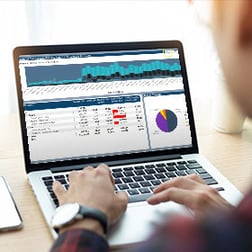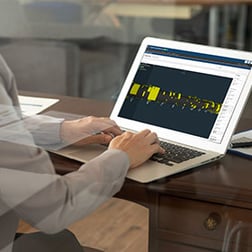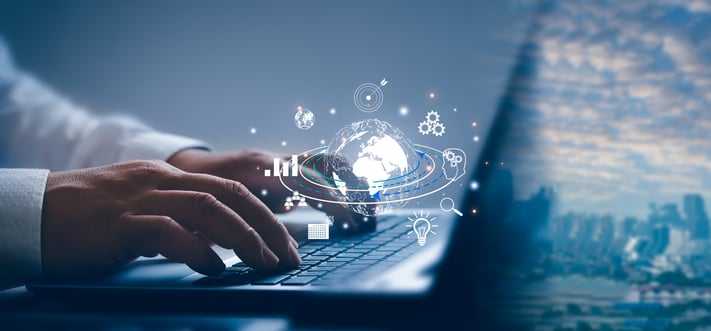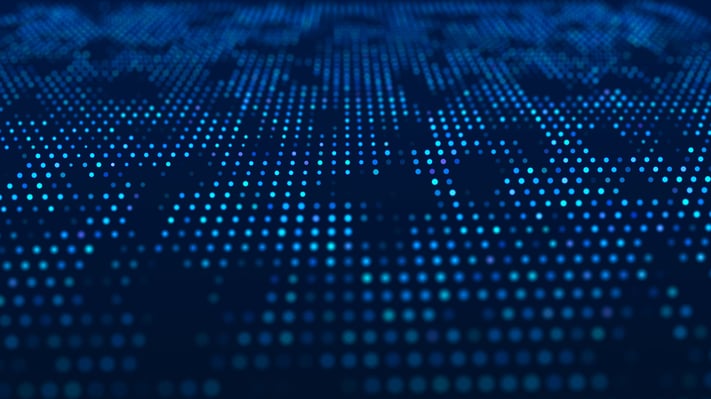One Bridge Solutions
Calculating the Total Cost of Ownership for Integrity Management Software
Companies ready to upgrade software need to consider more than just purchase price.
If your pipeline team is looking at new integrity management software, your first question is likely, “how much does it cost?” The answer isn’t easy or simple—it involves several factors.
Before selecting one application over the other, examine the total cost of ownership (TCO). You’ll have to uncover all software-related expenses to make an accurate estimate. The total cost includes both the initial purchase price and what you pay for a system over time, such as maintenance fees, reliability support, extra features, security upgrades and more.
Understand SaaS vs. on-premise
On-premise pipeline software can be a custom “in-house” solution or an “off-the-shelf” product provided by a 3rd party. On-premise software is generally installed on your physical computer or server in your building.
Software as a Service (SaaS) is a cloud-based solution hosted and maintained off-site by a 3rd party provider on remote computers and accessed over the internet using an internet browser with no installation of any software on-premise. As we’ll see later, SaaS frees companies from the many hidden costs, pains and worries of managing an on-premise solution.
A very important distinction between SaaS and On-Premise software is who bears the risk of the software meeting or not meeting your needs. With on-premise, the purchaser bears the risk as if the software does not provide the functionality you need, refunds of license fees are rarely provided – you’re stuck with it. With SaaS software, if it does not meet your needs, you cancel the usage contract and only suffer losing a few monthly payments, not an entire license fee and all the related acquisition costs.
Cognitive Integrity Management (CIM) TM is an example of a pipeline integrity management SaaS solution designed explicitly with pipeline operators in mind.
Estimate the total cost of ownership (TCO)
The total cost of ownership for software is the purchase price plus the ongoing costs of operation. Calculating TCO gives the complete picture of your investment and ongoing expense so you can assess the software and its value to integrity management over time.
We’ll dig deeper into the differences between SaaS vs. on-premise in future blogs, but for now, here are a few general cost considerations when it comes to estimating TCO.
Startup Costs
- Software: Acquisition costs, and user license fees.
- Implementation: Setting up, configuring, and testing software for use; also developing, implementing and maintaining data backups and recovery. There is also a lead time associated with installation of the software and training of the IT staff and users before the Company can begin to enjoy the benefits of the acquired software.
- Data transfer: Migrating data into the new software, including format changes and alignment.
- Training: IT, end-user and helpdesk costs.
- External interface: Integration with other systems within the company.
- Updating: A common problem with on-premise software is the creation and installation of custom functionality required for a particular user. The problem is that as the software vendor releases new versions of their software, the custom functionality must be migrated into that new version. The continual cost of migration can be very expensive in both the short and long term.
OpEx Costs
- Maintenance: Patches, upgrades, and ongoing support. Annual maintenance costs are typically a percentage of the initial purchase price and are 20% to 25% per year according to Computer Economics. Maintenance is automatically included in a SaaS software subscription.
- Development upgrades & Regulatory compliance: Engaging program developers to implement new functionality as required for custom solutions as stated above. Immediate response to PHMSA regulatory changes.
- Customization of system: To meet the requirements of your current IMP, specific reports that differentiate your company from your peers will cost significantly more.
- IT support: Helpdesk support, administration and management of users plus training the IT staff on the peculiarities of the purchased software. The ongoing management of the IT department absorbs management attention better spent concentrating and improving their core operations of the Company.
- Hardware: CPU capacity to run the software and store company data, plus backup and disaster recovery expenses (not applicable to cloud solutions).
- Data centers: Servers farms need to be fast enough to handle user needs and if not, will require upgrading. Servers have technological shelf-lives and need refreshing and replacement on a regular basis. Network infrastructure costs, such as electricity usage, floor space, environmental control (i.e., air conditioning and fire suppression services), security and facility management. Hardware also faces depreciation (not applicable to cloud solutions). Most SaaS vendors must certify compliance with commonly accepted industry security standards which are far stricter and offer much greater data protection and privacy than can individual companies attempting to accomplish the same objective.
- Cyber security: Your data center may be open to potential attacks without adequate security / firewalls in place.
Seek the lowest TCO and the best data utilization
The solution with the lower TCO will provide better value in the long run.
With SaaS, many expenses are included, helping you to know and budget your operating costs with fewer surprises. In fact, Gartner (March 2021) recommends that CIOs adopt a cloud-first policy where appropriate due to the increase in agility, flexibility, scalability and to gain cost efficiencies over time.
While the lifetime cost of software is an important consideration, its utilization in the Integrity Department is an essential factor for integrity engineers. The software must continue to meet integrity needs over a long period. SaaS software vendors who rely on customers continually maintaining the usage contracts, are keenly aware of this and thus their software is under continual development to provide the functionality and benefits that their customers value.
SaaS is the natural next step for integrity management software as the pipeline industry moves towards zero failures. Relative to on-premise software, cloud-based applications offer superior data utilization thanks to their flexibility and ability to harness innovations, such as machine learning, the IoT, 5G and more.
As Gartner predicts, “The cloud will serve as the glue between many other technologies that CIOs want to use more of, allowing them to leapfrog into the next century as they address more complex and emerging use cases.”
Look forward to our upcoming posts as we dive into the cost details of Purchase and Implementation, Maintenance, and Data Usage for integrity management solutions.


















